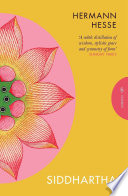If you are looking for the best Hermann Hesse books, look at our guide to discover the books you need to add to your reading list.
Hermann Hesse was born in Germany in 1877, but he is mainly known as a Swiss poet, novelist, and painter. He is one of the most famous authors of all time, beautifully blending theological studies with philosophy and spirituality. His writing is known for its tremendous depth, and it remains relevant to life today. He won the Nobel Prize for literature in 1946, and his work is still studied at colleges and universities across the globe.
Table of Contents
Open Table of Contents
Must-read Hermann Hesse Best Books
1. Siddhartha, 1922
Any list of the best books by Hermann Hesse has to start with Siddhartha, published in 1922. It is widely considered his most outstanding work and shows the influence of both Buddhist and Indian philosophies on Hesse himself. His parents were missionaries in India, and this book focuses on the quest for enlightenment and the meaning of the human experience. The book’s central theme is that everyone has to embrace individual differences, but this book is so beautiful that it may read a bit more like a song than a story.
“I have always believed, and I still believe, that whatever good or bad fortune may come our way we can always give it meaning and transform it into something of value.”
Hermann Hesse, Siddhartha
2. Demian, 1919
**Demian shows us that Hermann Hesse was tremendously interested in psychology and psychoanalytic themes. The story focuses on a character named Emil Sinclair, who is torn between two worlds. The first is reality, and the second is an illusion. It draws on the psychoanalysis that Hesse went through with Carl Jung. In addition, this book draws heavily on the works of Sigmund Freud and focuses on the clashes between a young man’s desires and modern society’s morals.
“I have been and still am a seeker, but I have ceased to question stars and books; I have begun to listen to the teaching my blood whispers to me.”
Hermann Hesse, Demian: Die Geschichte von Emil Sinclairs Jugend
3. The Glass Bead Game, 1943
[**](https://amazon.com/dp/8087888383? tag=work089-20)The Glass Bead Game was the last major work that he wrote. It was published in 1943 and focuses on the tremendous power within the human spirit. The goal was to inspire the German population to embrace change, which was happening quickly in 1943. The novel cannot be discussed without placing it in the context of the Second World War, as it brought tremendous shame to people of German descent. This is clear in the work of Hesse, who was also significantly impacted by the war.
“Each of us is merely one human being, merely an experiment, a way station. But each of us should be on the way toward perfection, should be striving to reach the center, not the periphery.”
Hermann Hesse, The Glass Bead Game
4. Peter Camenzind, 1904
**Peter Camenzind was his first major novel. It was published at a time when Germany was going through significant transitions, both economically and technologically. Even though many people were focused on embracing modern technology at the time, this book encouraged everyone in Germany to take a closer look at nature. It beautifully juxtaposes modern social ideas against a return to nature and takes a brutally honest approach to society, painting a powerful picture of humanity.
“I began to understand that suffering and disappointments and melancholy are there not to vex us or cheapen us or deprive us of our dignity but to mature and transfigure us.”
Hermann Hesse, Peter Camenzind
5. Steppenwolf, 1927
**Steppenwolf focuses on themes of isolation and self-reflection in the face of an ever-evolving utopian society. The book reads like a direct attack on the values of the bourgeoisie, creating a very intense novel that will grip the reader’s attention from start to finish. There is tremendous emotional pain in the novel, as it draws from Hesse’s personal experiences in a mental institution. The book’s theme is to focus on exploring our ident want to become the best versions of ourselves.
“There is no reality except the one contained within us. That is why so many people live such an unreal life. They take the images outside of them for reality and never allow the world within to assert itself.”
Hermann Hesse, Steppenwolf
6. The Journey To The East, 1932
**The Journey To The East is a book based on Hesse’s journey east as he searched for individual spirituality. He was always attracted to Buddhism and India during his life, and he reflects on that journey in this novel. In the book, a man joins a religious sect that heads east, searching for the ultimate truth. He learns a lot more about himself along the way.
If you want to discover the best authors in literary realism, You can also use our search bar to search for other best book authors in any genre you are interested in!
“For our goal was not only the East, or rather the East was not only a country and something geographical, but it was the home and youth of the soul, it was everywhere and nowhere, it was the union of all times.”
Hermann Hesse, The Journey to the East
7. Gertrude, 1910
Gertrude is a fictional memoir. It focuses on the main character’s relationships with two great artists. One was a self-destructive artist, and the other was a renowned composer. It is a story of love and loss, challenges in the artistic world, and how we can take great inspiration from some of the most challenging moments in our lives.
“That is where my dearest and brightest dreams have ranged — to hear for the duration of a heartbeat the universe and the totality of life in its mysterious, innate harmony.”
Hermann Hesse, Gertrude
8. Narcissus and Goldmund, 1930
In Narcissus and Goldmund, the two protagonists have led markedly different lives. The first one leads a life that focuses on religion, and the second leads to light that focuses on art. The message behind this book is that each has its vices and virtues, and it is essential to consider the benefits and drawbacks of each path. The reader is encouraged to reflect on each character, taking lessons from each person’s life that they can apply to their own.
“It is you I have been able to love, you alone in all the world. You can have no idea of what that means. It means a spring in the desert, a blossoming tree in the wilderness.”
Herman Hesse, Narcissus and Goldmund
9. Beneath the Wheel, 1906
[**](https://amazon.com/dp/031242230X? tag=work089-20)Beneath The Wheel focuses on Hans Giebenrath, who lives in a nondescript, dull town in the Black Forest. Eventually, he discovers he is a gifted student, and the entire community pressures him to fulfill his potential by pursuing more serious scholarships. He starts to work hard but rea that his efforts are only rewarded with more work. The story focuses on the clash between his goals and what he feels is his duty.
“Like a wallflower he stayed in the background waiting for someone to fetch him, someone more courageous and stronger than himself to tear him away and force him into happiness.”
Hermann Hesse, Beneath the Wheel
10. Knulp, 1915
**Knulp is a story that focuses on the main character, whose name is the story’s title. Three separate tales are shared. The main character is a vagrant who encounters several challenges trying to survive. He gets some help along the way but is also looked down upon by other people. The story gives people an inside look at how those most overlooked by society live.
You can also use our search bar to search for other best books in any genre you are interested in!
“A father can pass on his nose and eyes and even his intelligence to his child, but not his soul. In every human being the soul is new.”
Hermann Hesse, Knulp
FAQs About the Best Hermann Hesse Books
Did Hermann Hesse win the Nobel Peace Prize?
No, he did not win a Nobel Peace Prize. Instead, he won the Nobel Prize for literature in 1946 and is known for publishing some of the best poetry books.
Were Hermann Hesse and Carl Jung friends?
They were familiar with one another, but it is unclear if they were friends. They met in 1917, and Carl Jung psychoanalyzed Hermann Hesse. It is also widely believed that Carl Jung may have influenced Hesse’s most notable works, Siddhartha and Steppenwolf, both of which were published after they first met.#
Frequently Asked Questions
What makes great poetry?
Great poetry combines beautiful language, emotional depth, and meaningful themes. It should resonate with readers on both intellectual and emotional levels, offering new insights or perspectives through carefully chosen words and imagery.
How do I start reading poetry?
Start with accessible poets like Mary Oliver, Billy Collins, or Rupi Kaur. Read slowly, don’t worry about understanding everything immediately, and focus on how the poems make you feel. Poetry is meant to be experienced, not just analyzed.
Why should I read poetry?
Reading poetry can improve your language skills, emotional intelligence, and appreciation for beauty. It offers unique ways of seeing the world and can provide comfort, inspiration, and new perspectives on life and human experience.
What are the best poetry books for beginners?
Great poetry books for beginners include ‘A Thousand Mornings’ by Mary Oliver, ‘The Trouble with Poetry’ by Billy Collins, and ‘Milk and Honey’ by Rupi Kaur. These books offer accessible, beautiful poetry that resonates with modern readers.
What is the name of Hesse’s most famous book?
Arguably, Hermann Hesse’s most famous book is Siddhartha, published in 1922. The book focuses on the journey toward human enlightenment.





